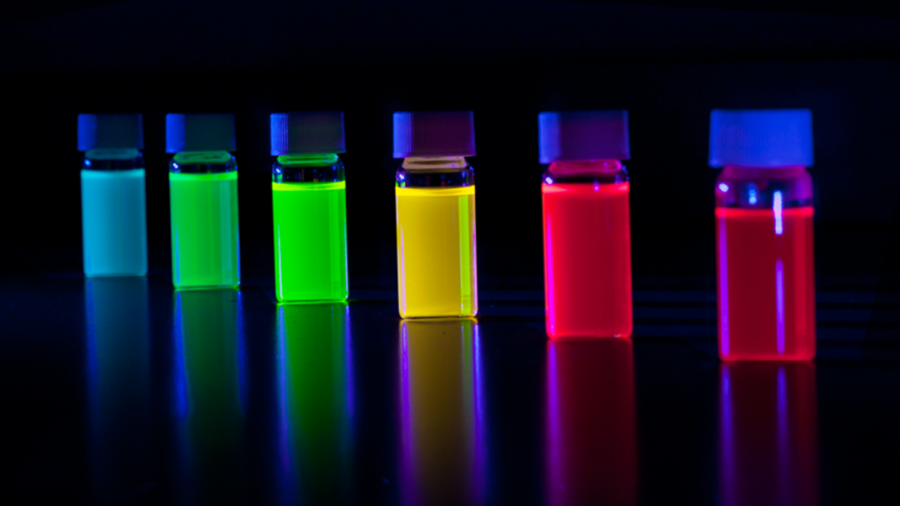QD for Color Conversion: Roadmap to QDCF
Display manufacturers, frequently separated into one of two camps, are approaching a crossroads that could define the next generation of monitors, small screens (mobiles, smartwatches, etc.) and televisions. We are referring to the use of quantum dots (QDs) for color conversion.
There are currently hundreds of distinct products on the market containing QDs, with more in the pipeline from manufacturers on either side of the technological divide. Though QDs have retained a competitive edge with organic light-emitting diodes (OLEDs) from a performance perspective for some time, we are also seeing a dramatic decline in pricing and assembly costs for QD-enhanced systems too.
This transpires as developers and innovators in the QD space continue driving towards new technologies and greater display systems, such as quantum dot color filters (QDCF).

QD for Color Conversion: How Does it Work?
QDCF, also referred to as quantum dot color conversion (QDCC), is a foundational technology that could dramatically improve the color volume performance of virtually any display technology, including LCD and OLED. So, how does it work?
Firstly, it is worthwhile outlining how QD color conversion works in existing LCD systems. The standard technology used today is known as quantum dot enhancement film (QDEF), which refers to layers of red and green QDs overlaid on a blue backlight behind the usual series of polarizers and color filters present in a typical display. Panels with built-in QDCF technology operate on a similar principle.
A QDCF uses QDs for color conversion at the front of the panel rather than adjacent to the backlight. This replaces the traditional color filter with a film of much greater efficiency, comprising a series of red and green QDs patterned at the subpixel level. These subpixels absorb incoming blue light and convert it into high purity red and green peaks. As there are no blue QDs present, blue light from the back of the panel is simply transmitted by the color filter without modification.
There are numerous benefits to this method of using QDs for color conversion, including greater device efficiency as much less light is lost to color filtering. But how close is this novel technology to becoming a reality for consumers?
Benefits & Challenges of QD Color Conversion
One of the reasons we described the onset of next-generation QD color conversion as a crossroads is that it can be integrated into practically any display system that uses a blue backlight. This makes it a feasible next step for both LCD and OLED manufacturers, with tangible performance enhancements for each technology. It could enhance the brightness of comparatively dim OLEDs, for instance, while dramatically improving the viewing angles of conventional LCDs.
This doesn’t mean that the road to QDCFs is a smooth one. There are inherent challenges that developers and manufacturers need to overcome to make QDs for color conversion at this new level a reality. LCDs equipped with a QDCF or QDCC will need to be redesigned to include an in-cell polariser, for instance, and the environment inside the display will present new challenges in ensuring the QDs remain stable.
QD for color conversion in OLED stacks will also be limited by the inherent lifetime issues associated with blue organic light-emitting materials. This is an enduring pain point of OLED manufacturing where white OLEDs offer greater longevity at the cost of low efficiency.
The roadmap to success for next-generation QD color conversion technology subsequently requires a few key achievements: cadmium-free QDs with exceptional blue absorption, high quantum yields and excellent stability as well as the ability to eliminate cross-talk between RGB subpixels and maintain the widest color gamut possible.
QDs for Color Conversion from Avantama
Avantama is one of the industry leaders in QD formulations for display applications. If you would like to learn more about our high-stability QD materials for colour conversion applications, simply contact a member of the team today.